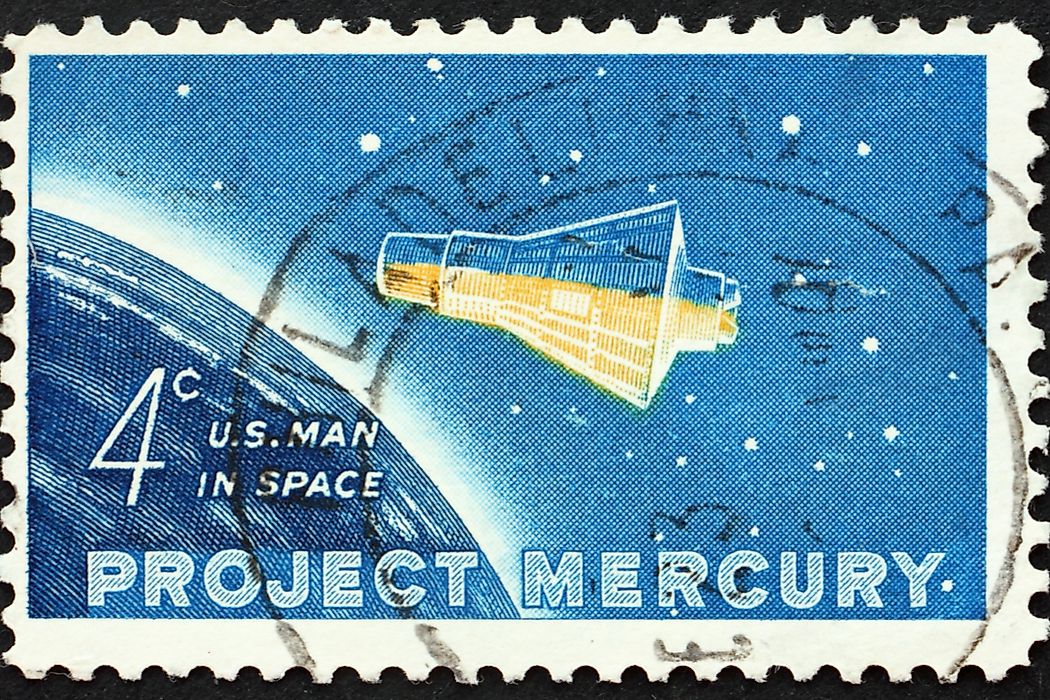What Was Project Mercury And Who Were The Mercury Seven?

What Was Project Mercury?
Project Mercury was the first NASA program to send American astronauts into space. Beginning in 1958 and ending in 1963, Project Mercury was part of the Space Race against the Soviet Union to successfully put an astronaut into orbit with a safe return. NASA launched the first Mercury flight on August 21, 1959. The spacecraft used for the project was named Mercury, taken from Roman mythology.
Creation of Project Mercury
The first step in Project Mercury was the selection of seven astronauts who became known as the Mercury Seven.
Next, NASA adopted guidelines for the space launch systems and capsules. Engineers were tasked with developing simple system designs for Project Mercury. However, NASA experienced several challenges in its attempt to design space capsules to be used for the mission, as test flights revealed certain weaknesses. For example, the first Atlas rocket exploded. For safety reasons, test flights did not have astronauts aboard. These failed attempts enabled NASA to find and fix problems associated with launching humans to space. Instead, test flights included a Rhesus monkey and two chimpanzees named Sam, Ham, and Enos.
NASA completed six missions between 1961 and 1963 as part of Project Mercury. The first two missions used a Redstone rocket, while the rest used Atlas rockets. The flights were made between 1961 and 1963.
Who Were the Mercury Seven?
Mercury Seven were the seven US astronauts selected for Project Mercury by NASA on April 9, 1959. Also referred to as the Original Seven or Astronaut Group 1, the Mercury Seven included the following astronauts: Alan Shepard, Gus Grissom, John Glenn, Scott Carpenter, Wally Schirra, Gordon Cooper, and Deke Slayton.
Alan Shepard
Alan Shepard was the first astronaut sent into space as part of Project Mercury. Shepard's space flight, which lasted 15 minutes, occurred on May 5, 1991, aboard space capsule Freedom 7. Several years later, Shepard lead the Apollo 14 mission to the moon, walking on the moon in 1971.
Gus Grissom
Gus Grissom piloted the second Mercury mission into space in a capsule named Liberty Bell 7. However, neither Shepard nor Grissom orbited the Earth. Both were aboard suborbital flights, reaching outer space and then returning to Earth.
John Glenn
The third member of Mercury Seven in space during the Mercury Project was John Glenn, who also became the first American to orbit Earth in 1962 aboard the Friendship 7 spacecraft.
Scott Carpenter
Scott Carpenter launched the fourth Mercury mission in space aboard the Aurora capsule. Carpenter’s mission ran low on fuel, and therefore NASA ended the mission after two orbits of Earth instead of the scheduled three orbits.
Wally Schirra
Wally Schirra piloted the fifth Mercury mission aboard the Sigma 7 capsule.
Gordon Cooper
Gordon Cooper piloted the project's last mission, which took 34 hours to circle Earth on the Faith 7 capsule.
Deke Slayton
The last member of Mercury Seven, Deke Slayton, was not involved in a space mission during Project Mercury due to a health complication. However, Slayton later reached space in 1975 during the Apollo-Soyuz Test Project.
Legacy of the Program
Project Mercury was the first successful spaceflight to launch Americans astronauts in space with the goal of putting a human in Earth’s orbit. It was a milestone achievement for NASA, and the Mercury project provided invaluable lessons that became fundamental in subsequent NASA space programs.











